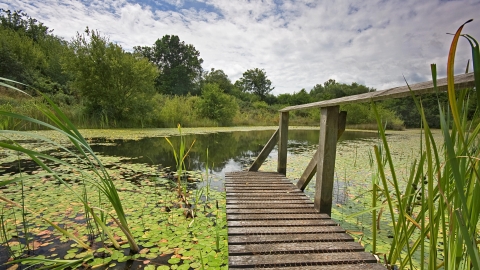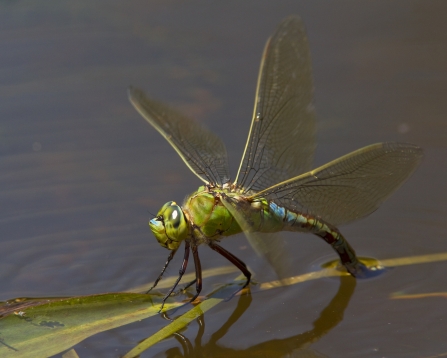
Little Bradley Ponds. Photo, Dave Chamberlain
Little Bradley Ponds
Location
Know before you go
Dogs
When to visit
Opening times
Open at all timesBest time to visit
April to OctoberAbout the reserve
Two large ponds in an area of former clay working; well known for its abundance of dragonflies.
Ash dieback
The disease ash dieback is now widespread in the UK and is present at many of our nature reserves, so we carry out tree felling across our sites in winter months. For your own safety please observe temporary path diversions and closures.
Where possible we will leave affected ash trees in place to decay naturally as an important habitat for wildlife. We plan to only fell diseased ash trees which pose a threat to people or infrastructure. Before trees are felled, we will check whether any rare or protected wildlife is present. If it is, we will postpone or avoid felling these trees. No felling will take place during the bird nesting season.
DWT’s Saving Devon’s Treescapes project are working with communities, landowners and businesses to help make Devon's precious treescapes more resilient in the face of ash dieback. Find out how you can get involved here.
NOTICE: If you are visiting our reserves, please note that there have been instances of H5N1 Avian bird flu found in birds in Devon. There is very low risk to public health, but we do ask that if you come across any unusual or unexplained bird deaths on or near our reserves, please do not touch them and avoid allowing your dog to come into contact with dead birds. Please report them to Defra here or call 03459 335577 and also report your findings to DWT by email at contactus@devonwildlifetrust.org.
Habitat
Contact us
Location map
How to get to Little Bradley Ponds
Two large ponds in an area of former clay working; well known for its abundance of dragonflies

Emperor dragonfly. Photo, Neil Bygrave
Dragonfly heaven
Little Bradley Ponds consists of two large ponds in an area of former clay workings. More than 20 species of dragonfly and damselfly have been spotted here. Rarities include hairy dragonflies, downy emerald dragonflies, ruddy darters, small red damselflies and scarce blue-tailed damselflies.
The ponds are also an important amphibian breeding spot, especially for toads. Great crested newts have also been found here.
Be aware
The nature reserve's two ponds are deep, steep-sided and contain hidden obstructions. For these reasons swimming is not permitted.
Combine a visit to this nature reserve with one to nearby Chudleigh Knighton Heath. If you like heathland then you'll also enjoy visiting our Bovey Heathfield nature reserve - just 10 minutes away by road. You can visit all three nature reserves by taking our 4.5 mile Bovey Basin Wild Walk.
Become a member and support our work
The vital work we do for nature depends on the support of people who care about the future of Devon’s wildlife and wild places.




